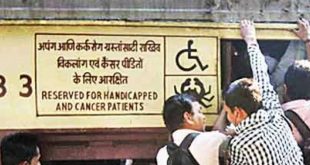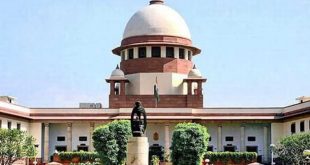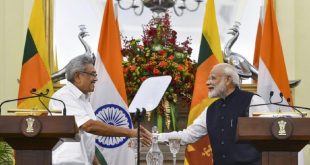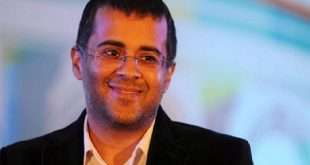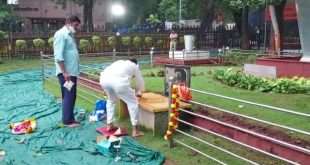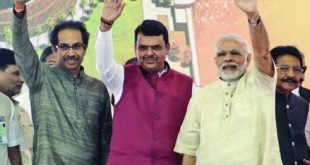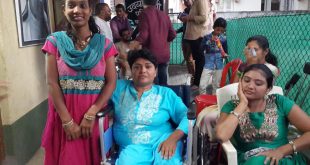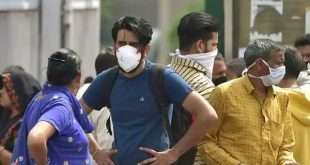देशातील शालेय आणि उच्च शिक्षण एकाच छत्राखाली आणण्यासाठी केंद्र सरकारने नुकतेच राष्ट्रीय शिक्षण धोरण जाहीर केले. या धोरणातील तरतूदीनुसार एकूण जीडीपीच्या ६ टक्के खर्च शिक्षणावर खर्च करण्यात येणार आहे. गतवर्षीच्या तुलनेत ही सर्वाधिक रक्कम आहे. पण हे धोरण तयार करताना धोरणकर्त्या समितीने विद्यार्थ्यांच्या शिक्षणात पडणाऱ्या खंडाबद्दल किंवा विद्यार्थी गळजीबद्दल जर विश्लेषण केले असते तर अधिक बरे झाले असते. तसेच निश्चित अशी कारणेही समोर येवून त्याचा एक माहिती साठा तयार झाला असता. या धोरणात विशेषत: उच्च शिक्षण घेताना विद्यार्थ्यांस प्रवेश घेणे आणि ते थांबवून बाहेर पडणे सारख्या तरतूदी करण्यात आल्या आहेत. मात्र एकाबाजूला देशातील प्रत्येक विद्यार्थाला शिक्षण घेणे गरजेचे आणि दुसऱ्याबाजूला त्यातून बाहेर पडण्याची सोय या दोन्ही तरतूदी एकमेकांच्या परस्परविरोधी असल्याचे दिसून येत आहे. या पध्दतीच्या गोष्टी समाजशास्त्रातील संशोधनात अनेकवेळा दिसून येतात. मात्र या धोरणात ही गोष्टच विचारात घेतल्याचे दिसून येत नाही.
शिक्षण धोरणात प्रत्येकाला शिक्षण हे समानतेचे धोरण स्विकारण्यात आले आहे. सध्याच्या काळात स्थलांतरीत विद्यार्थ्यांचा विचार करून कॉलेज, शाळांमध्ये डिजीटल पध्दतीचे शिक्षण सुरु करण्यात आले आहे. तसेच अनेक शाळांचे डिजीटायझेशन करण्याची कल्पना मांडण्यात आलेली आहे. ही संकल्पना चांगली असली तरी बहुतांष विद्यार्थी हे आर्थिकदृष्ट्या गरीब स्थितीतील आहेत. त्यामुळे शिक्षणासाठी डिजीटल माध्यमाची मदत अर्थात कॉम्प्युटरची सुविधा त्याला कुठे मिळणार आहे? देशातील अनेक शाळांची परिस्थिती चिंताजनक असून यातील अनेक शाळांमध्ये पिण्याचे पाणी, शौचायलांची पुरेशी व्यवस्थाच नाही. तसेच अनेक शाळा या किमान दर्जाच्या नियमांची पुर्तताही पूर्ण करू शकत नाहीत. त्यामुळे अशा शाळांना डिजीटल पध्दतीच्या शाळा सुरु करू देण्यास परवानगी देता येणार नसल्याने किमान दर्जाच्या अभावामुळे डिजीटल शिक्षण आणि विद्यमान शिक्षण व्यवस्था यात मोठ्या प्रमाणावर एकप्रकराचे अंतर आहे.
प्रत्येक शैक्षणिक धोरणात आणि शैक्षणिक तज्ञांकडून शिक्षकांच्या प्रशिक्षणाचा विषय चर्चिला जातो. तसेच विकास कार्यक्रमांतर्गत सतत चर्चाही होते. परंतु प्रत्यक्षात त्याच्या अंमलबजावणीबाबत काहीच होताना दिसत नाही. त्यामुळे सद्य परिस्थितीत काम करत असलेल्या शिक्षकांना प्रशिक्षण दिल्यास चार वर्षाच्या पदवी अभ्यासक्रमाच्या शिकविण्याची आणि बहुविषयी संस्था निर्माण होण्यासाठी या प्रशिक्षणाचा त्याचा फायदा होईल.
राष्ट्रीय धोरणानुसार जर उच्च शिक्षण क्षेत्रात बहुविषयक संस्थांची निर्मिती करावयाची असेल तर विद्यापीठास्तरावरील व्यवस्था साधी-सोपी करावी लागणार असून व्यावसायिक, मानवी आणि पूर्णपणे विज्ञानावादी गोष्टींवर भर द्यावा लागणार आहे. तसेच डिम्ड टू बी युनिर्व्हसिटी (deemed to be university), अफीलेटींग युनिर्व्हसिटी,(affiliating university), युनिटरी युनिर्व्हसिटी (unitary university) आदी गोंधळ निर्माण करणाऱ्या गोष्टींपासून दूर राहण्यासाठी फक्त सार्वजनिक ( सरकारी) खाजगी किंवा खाजगी मदतीवर अशा पध्दतीच्या विभागांवर आधारीत रचनेची गरज आहे. बहुविषयी संशोधन संस्था किंवा निर्धारीत शिक्षण देणारी विद्यापीठांच्या निर्मितीवर भर देताना त्या बौध्दीकदृष्ट्या सक्षम म्हणून पुढे येतील. परंतु तेथील शिक्षण देण्याच्या पध्दती या वादातीत राहण्याची शक्यता आहे. त्यामुळे बौध्दीकदृष्ट्या सक्षमतेसाठी कोणतीही अनुशासनीय पध्दती स्विकारली ती शैक्षणिक उत्पादकतेची असायला हवी.
आपल्या भारतीय विद्यापीठे ही मोठ्या प्रमाणावर गंभीर संशोधनापासून दुरावली असल्याने त्यांच्यापासून उद्योग क्षेत्रही दुरावाली आहेत. पेटंट आणि आयपीआरच्याशिवाय आपल्याकडे संशोधन केले जाते. त्यामुळे इनोव्हेशन अर्थात प्रेरणादायी असणाऱ्या गोष्टी बाजूला फेकल्या गेल्या आहेत. त्यामुळे राष्ट्रीय शिक्षण धोरणात यासंबधी नवे प्राधिकरण अर्थात National Research Foundation (NRF) स्थापन्याची संकल्पना पुढे करण्यात आली आहे. ही संकल्पना जरी चांगली असली तरी त्याच्या प्रभावीपणाला मर्यादा येण्याची शक्यता आहे. याच पध्दतीचे काम Higher education financing agency (HEFA) ही एजन्सी करत आहे.
याशिवाय महाविद्यालयांचे मानांकन, त्यांचा पतपुरवठा, नियमक संस्थांचे नियमांचे एकमेकांपासून वेगळे करण्याची शिफारसही धोरणात करण्यात आहे. परंतु सध्याची व्यवस्थेतील या संस्थामध्ये बदल करून National Higher Education Council नवी संस्था कार्यान्वित करण्यात येणार आहे. तसेच या संस्थेच्या माध्यमातून व्होकेशनल शिक्षण, उच्च शिक्षण आणि व्यावसायिक शिक्षण व्यवस्थेतही बदल करण्यात येणार आहेत. मागील काही वर्षात तंत्रज्ञान शिक्षण क्षेत्रात मोठी वाढ झालेली असल्याने यास स्वंतत्रपणे हाताळण्याची गरज आहे. तसेच त्या शिक्षण पध्दतीने विविध माध्यमातून पाहणे गरजेचे आहे. याशिवाय सर्वसाधारण शिक्षणात विधी अर्थात कायद्याचे शिक्षण आणि वैद्यकीय शिक्षण का एकत्रित ठेवण्यात आलेत हे कळत नाही. त्यामुळे ही सर्व शैक्षणिक क्षेत्रे एकमेकांपासून वेगळी करण्याची आवश्यकता आहे.
आपल्या देशात आयआयटी सारख्या अनेक नामांकित संस्था असून या संस्थामधून अनेक पीएचडी धारक आपली संशोधने अर्थात रिसर्च पेपर सादर करत असतात. या रिसर्च पेपरचे प्रकाशनही अनेक नामवंत पत्रिकांमधून प्रकाशित करण्यात येते. त्यमुळे हे संशोधक जगनमान्य होतात, त्यांचे संशोधन सर्वदूर पोहोचते. परंतु यातील दु:खदायक गोष्ट म्हणजे ही संशोधने एखाद्या गोष्टीचे उत्पादन करण्यास असमर्थ ठरतात. या गोष्टीकडे जर राष्ट्रीय शिक्षण धोरणाने लक्ष घातले असते तर त्याचा निश्चितच फायदेशीर ठरले असते. या पध्दतीचे काम जर्मन देशात झाले आहे. याशिवाय
Fraunhofer Model नुसार जर संस्थांनी संशोधने केली तर ७० टक्के उत्पन्न संस्था मिळवू शकतील आणि ३० टक्के उत्पन्न खाजगी कंपन्या किंवा शासकिय कार्यालयांना मिळू शकेल. त्यासाठी सरकार प्रोत्साहन मिळायला हवे. या पध्दतीच पतपुरवठ्याची मॉडेल समाजघटकांना मध्यवर्ती ठेवून किंवा वैयक्तिक संस्थाना नजरेसमोर ठेवून केल्यास वास्तविक पध्दतीने लवचिक, स्वायत्त आणि उद्योजक निर्मितीच्या संशोधनास प्राथमिकता मिळण्यास प्रोत्साहन मिळेल.
Max Planck and Fraunhofer model या दोन्हीमुळे देशात मेक इन इंडिया-स्टार्ट अप सारख्या योजनांना चांगल्या संधी उपलब्ध होईल. मेक इंन इंडिया या उपक्रमातून नवनवे उत्पादन होवून देशाला उत्पादनक्षम हब बनविण्यात आणि नव्या बाजारातील संरक्षण, रेल्वे, कृषी, आरोग्य, पायाभूत सुविधा यात नव्या रोजगारातील संधी निर्माण होवून विकासाच्या संकल्पनेत त्याचा पाया म्हणून वापर करता येईल.
आभासी लॅबोरेटरिझ् सारख्या गोष्टीच्या माध्यमातून पोहचू न शकणाऱ्या गोष्टीपर्यंत आपण पोहोचू शकू, किंवा यातून एकप्रकारचे मुल्यांकनात वाढ होईल. परंतु अप्लाईड सायन्स हे काही आभासी विज्ञान नसून ते एक वास्तविक विज्ञान आहे. माहिती व तंत्रज्ञानाच्या माध्यमातून शिक्षण पुरविण्याची योजना असून या तंत्रज्ञानाच्या माध्यमातून आपण सहज पोहचू न शकणाऱ्या दुर्गम भागात सहज पोहोचू. त्यामुळे कितीही दूरच्या आणि दुर्गम भागात शिक्षण पोहोचविणे ऑनलाईन पध्दतीने पोहोचविणे शक्य होणार असल्याने त्याची शिफारस करायलाच हवी असून ती एक चांगली शिफारस ठरणार आहे.
धोरण हे मग कोणत्याही स्वरूपाचे असो, त्यामाध्यमातून शिक्षण आणि उपलब्ध रोजगाराच्या संधी यांच्याशी जोडणारी असायला हवी. त्यामुळे रोजगाराच्या संधीत अनेकवेळा वाढ होत राहील. त्यासाठी गुंतागुंतीच्या, डायनॅमिक आणि भविष्यात जागतिकस्तरावर जलदगतीने वाढणाऱ्या संधीसाठी विद्यार्थ्यांना शिक्षणाच्या माध्यमातून तयार करणे आवश्यक असून त्यासाठी त्यांना त्या पध्दतीचे शिक्षणही उपलब्ध करून द्यावे लागणार आहे. तसेच त्या अनुषंगाने विद्यार्थ्यांना त्यात एक्सपोजर मिळेल असे कार्यक्रम प्रत्येक जिल्हा आणि गावपातळीवर व्हायला हवेत.
विद्यार्थ्यांच्या शिक्षण आणि त्यासाठी आवश्यक लागणाऱ्या वित्तीय पुरवठ्याच्या अंमलबजावणीच्यादृष्टीने धोरणात काही बाबी मांडण्यात आले आहेत. परंतु बदल म्हणजे फक्त बोलून त्याची पोकळी भरून निघणार नाही. त्यामुळे त्याविषयीच्या कल्पना आणि कृती याची व्याप्ती वाढवावी लागणार आहे. आपल्या देशात १०० बिलियन डॉलरचा शैक्षणिक बाजारपेठ आहे. पण त्यामधील गुंतवणूकीसाठी आपण फारसे आमंत्रण देत नाही. त्यामुळे धोरण अमलबजावणीची सविस्तर माहिती आणि त्यासाठी लागणारा निधी पुरवठा करणार याबाबत स्पष्टपणा नाही. तसेच हे धोरण कोणत्याही कायदेशीर कचाट्यात, राज्यांच्या विरोधात आणि अंमलबजाणीच्या संकटात अडकणार नाही यासाठी केंद्राने लक्ष दिले पाहिजे. अन्यथा या तिन्ही आव्हानावर मात करून धोरणाच्या यशाकडे किंवा अपयशाकडे जाणे होईल.
लेखक-डॉ. एस.एस.मंथा
एआयसीटीईचे माजी चेअरमन
कुलगुरू-केएल विद्यापीठ
( मराठी ई बातम्याच्या वाचकांसाठी इंग्रजी भाषेतील वरील लेख उपलब्ध करून देत आहोत.)
The policy by far is the best created, but will need funds in excess of 6% of GDP. It was 2.4% the last year. The committee would have done well if a chapter was dedicated to the gap study at the beginning. The recommendations would have carried a lot more conviction. Reasons for dropouts which are well documented elsewhere are unfortunately not accounted for in the policy. Provisions made for exits and compulsory education are contradictory. Such factors are often researched in social science but missing in the policy.
Equity calls for inclusion of all. Digitalization of open schools for ‘migratory’ children is a great idea. But most of the migratory children are poor. Where will they get the digital aids and computers to study from ‘digital open schools?’ Schools in India vary from single room structures without water and sanitation, to technology-enabled international schools. One would have expected a common minimum standard for setting up a school, below which no permissions can be accorded. Absence of a standard can actually widen the gap.
Teacher training has been talked about in every policy and every meet of educationists and all and sundry. Continuous Development Programs (CDP) for capacity building has been discussed but not explored enough for implementation strategies. To succeed, even the current teachers in the system must undergo training. However, with rigorous preparation through a four-year integrated stage and subject-specific programmes offered in multi-disciplinary institutions, the training could be effective.
The draft suggests a multi-disciplinary higher education system and a simplified university system, to emphasise on professional, humanities and pure science streams. Phasing out complex nomenclature such as ‘deemed to be university’, ‘affiliating university’, ‘unitary university’ and retain only terms as public, private, or private-aided is much needed. Pitching for multidisciplinary research universities or comprehensive teaching universities appears rational, though a debate of a teaching institute that also does research or a research institute that also does teaching will go on for ever, whatever be the recommendation. Any regimentation of education can only be counterproductive.
One of the major disconnect of Indian Universities has been the research quotient of our universities and it’s disconnect with the industry. Research without patents and IPR’s is a cause for concern. Innovation, variously understood has always been on the side-lines. The draft NEP’s recommendation of a new authority, the National Research Foundation (NRF) though a good idea, could easily be limited in effectiveness, given that Higher education financing agency (HEFA) also has similar functions.
It also advises segregation of accreditation, funding and regulation roles for regulators. Is creating a National Higher Education Council enough to replace the existing individual regulators in higher education, including professional and vocational education a good idea, is anybody’s guess, but then, one suspects we are going in circles. Technical Education has grown over the years with several dimensions and needs to be treated separately. Is it not the driver of economy in the country? Why merge this with general education when Law and Medical education is sought to be kept out?
We have several prestigious Institutions like the IIT’s that produce thousands of Ph. D’s. Several papers are published in reputed Journals. The researchers are world renowned and mix with the best of their ilk across the Globe. It is however a serious concern that the research does not coalesce to translate into products. The NEP would have made great service, if they had addressed the problem based on German experience. One important recommendation should have encouraged setting up institutions and societies on the Fraunhofer Model which earns about 70% of its income, through contracts with industry or specific government projects and the other 30% of the budget sourced in the proportion 9:1 from state Land government grants, used to support preparatory research. Thus the size of the society’s budget would depend largely on its success in maximizing revenue from commissions. This funding model applies not just to the central society itself, but also to individual institutions. This serves the realisation of such a society’s strategic direction to be a leader in applied research as also to encourage a flexible, autonomous and entrepreneurial approach to its research priorities.
Opportunities that could have accrued by setting up Max Planck and Fraunhofer model institutions, would have been phenomenal apart from supporting Make in India/Start up India initiatives. A Make in India hub for productization that would promote massively new products and new job markets in various sectors like the Defence, Railways, Agriculture, Healthcare and Infrastructure could have been the pole star of the report.
Virtual Laboratories either to reach the unreached or as a value addition may be good, but applied science is not virtual. It is real. A National Mission on Education through information and communication technology to enable virtual laboratories that provide remote access to laboratories in various disciplines will certainly prove useful but in itself cannot substitute the real. Blended learning should have been recommended in place of disaggregated distance or online learning paradigms.
Any policy must connect education with available opportunities of employment. That said, employment opportunities must grow many times. To be prepared for the jobs of the complex, dynamic, and rapidly globalizing future, students should have opportunities to learn first-hand, how their academic work applies to potential career paths and vice versa. Programs that allow for this exposure and provide students with tangible outcomes in every district and every village are called for.
The report must be detailed enough, both on the implementation and on the models of finance. Change does not result from speaking into a vacuum. Ideas and actions must extend well beyond social media and ‘edtech’ cliques. We have an education market in excess of 100 Billion Dollars but does not attract enough investments. The draft lacks operational details and does not offer insights into how the policy will be funded. The centre must also ensure that the policy does not face litigation, state resistance, and operational challenges hitting the ground for the road to success and the road to failure are almost exactly the same.
 Marathi e-Batmya
Marathi e-Batmya

